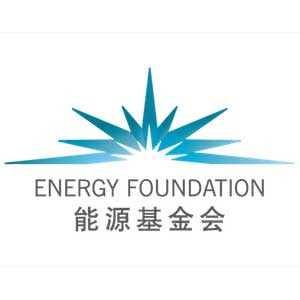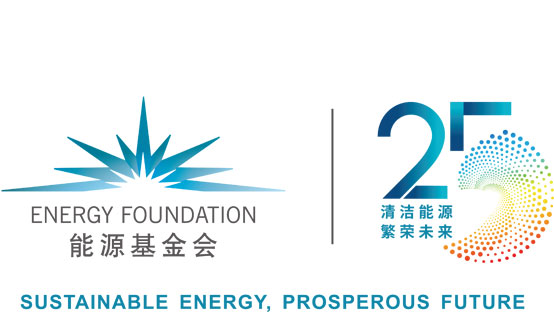Sensible Efficiency Standards Lead to Energy Saving and Emission Reductions

“During the Global Climate Action Summit held in San Francisco in September 2018, Minister Xie Zhenhua, China’s Special Representative for Climate Change Affairs, enthusiastically talked about how Energy Foundation China raised $2 million for the 2012 Hundred Energy Efficiency Standards Promotion Project (HEESPP), providing timely and strong support for the smooth progression of the project,” Dr. He Ping, Industry Program Director of EF China proudly recalled, when talking about the foundation’s efforts on improving industrial energy efficiency in the country.
The HEESPP is the epitome of the foundation’s 20 years of support for the continuous improvement of China’s industrial energy efficiency standards. The industrial sector is still the biggest consumer of energy, accounting for about 70 percent of the country’s total energy consumption. “Upgrading industrial energy efficiency standards is a relatively simple endeavor, but it can lead to valuable improvement of the big picture. On the one hand, it can promote reduction of energy consumption, thereby reducing greenhouse gas and air pollutant emissions; on the other hand, it will help transform advanced energy saving technology into higher productivity, which ultimately brings about better development of Chinese industries,” Dr. He said.
Since 1999, EF China has supported many milestone events and projects in China’s industrial energy efficiency improvement process, including many energy-related policy researches, analysis for standards development and revision, capacity building, and dissemination of best practices. The foundation wins recognition for its work and established friendship and trust with our Chinese and overseas partners.
Building a Solid Foundation for Efficiency Improvement in China
Over the last 40 years, China has experienced unparalleled industrial development, providing a strong engine for economic growth. This is especially the case since the beginning of the 21st century. In 2008, China’s industrial output was six times of the 2000 level of 4.5 trillion RMB. But at that time, China’s industrial sector faced a multitude of challenges, with many of the country’s industrial products leaving much to be desired in terms of quality and sophistication. And their production was not comprehensively covered by efficiency standards. Existing energy efficiency standards were not updated in time due to a lack of funds and other factors. This reality became a serious obstacle that prevented the Chinese industrial sector from upgrading itself. Between 2006 and 2010, experts discovered that the country was in dire need of creating or revising more than 100 energy efficiency standards.
In order to improve China’s industrial energy efficiency standards as soon as possible and guide development of the sector, the National Development and Reform Commission (NDRC) and the Standardization Administration of China (SAC) jointly launched the HEESPP in 2012. This was the largest wave of national standard setting actions since 1950s. EF China provided $2 million in research funding, a timely and significant support for the project.
Supervised by the NDRC and the SAC, the China National Institute of Standardization (CNIS) took the lead in the HEESPP, organizing various stakeholders, such as industry associations for steel, cement, chemical, and nonferrous metal, as well as major enterprises, over standard development and revision work. After nearly two years, more than 100 new or updated standards were publicly released. As of 2015, the second phase of the project was successfully completed too. A total of 206 national standards related to energy conservation were issued in the two phases, laying down a strong foundation for China’s industrial efficiency improvement. In the meanwhile, the implementation of the project greatly boosted China’s capacity for standard setting, opening a door for China’s participation in the formulation of international standards.
Leading the Charge for Energy Management System Standards in China
Between 2006 and 2010, efficiency standards propelled a flurry of corporate energy-saving actions in China. However, its effect struggled to meet high expectations, since a large number of enterprises had not yet formed an effective energy-saving system at the management level. And there was insufficient integration of targets, systems, and measures over energy saving.
At the time, many organizations, including the International Organization for Standardization, recognized the importance of an effective energy management system for energy conservation in enterprises and studied how to apply advanced management methods to guide enterprises to carry out planning, implementation, monitoring, and evaluation in this area.
Responding to the needs, EF China has worked with domestic institutions to promote the implementation of energy management systems in the country. One of its focuses is Shandong, a populous manufacturing province in Eastern China that has actively pushed for energy conservation and accumulated rich experiences in the process. With the support of EF China, Shandong took the lead in conducting research on an energy management system standard in 2008. It introduced advanced tools from overseas and carefully localized them by marrying international experiences with conditions on the ground in the province. In 2011, Shandong implemented the country’s first provincial standard for energy management system.
The province’s experiences provided valuable references and lessons for the introduction of the National Energy Management System Requirements in 2012. In the same year, the NDRC launched the world’s largest enterprise efficiency campaign—the Ten Thousand Enterprises Energy-Saving Campaign—requiring all participating companies to establish a sound energy management system. The objective was for them to continuously improve energy efficiency.
In the end, the campaign exceeded its original goal of energy saving: 250 million tonnes of standard coal, which is equivalent to reducing the emission of 660 million tonnes of carbon dioxide. It proved that energy management system is indispensable in our efforts to clean up the environment.
In addition, EF China provided support to pilot programs and actual enforcement of energy management system standards in Shanxi, Yunnan, Shanghai, and other regions. It also supported the development of the 10 Guidelines for Energy Management Systems and the accompanying best practice case studies, providing references to all those who are interested.
Aside from helping companies improve energy management, EF China is committed to sharing the experiences of China’s practices on energy management to the world and promoting international exchanges and cooperation. In recent years, the Clean Energy Ministerial (CEM) has launched an initiative to strengthen energy management in the industrial sector and established the Energy Management Leadership Award. The foundation has always encouraged Chinese stakeholders to participate in. In 2017, China took part in the award for the first time, with the China National Heavy Duty Truck Group and the Capital Airport successfully entering the 10 companies shortlist.
Helping Upgrade China’s Cooling Energy Efficiency Standards
China is the world’s largest producer, consumer, and exporter for air conditioners, with a 70 percent share of global production of room air conditioners. However, the energy consumption of refrigeration equipment has been increasing, as the demand for cooling continues to go up, indirectly generating more and more carbon emission, which is a major driver of global warming. It is estimated that, a temperature rise of 0.5 to 1 degrees Celsius can be avoided by the end of this century if the global energy efficiency of refrigeration products can be greatly improved with a green transformation.
EF China’s support for energy efficiency standards for cooling products, such as air conditioners and refrigerators, dates back more than a decade. Over the years, it has made significant contributions to the improvement of the standards through its support for research projects, seminars, exchanges, and other activities, together with various stakeholders. Now, the foundation seeks to continue its efforts on strengthening the current standards, in order to elevate the industry to a higher level. In 2018, EF China launched a three-year long China Cooling Efficiency Program with an initial investment of $5 million, under the support of the Kigali Cooling Efficiency Program (K-CEP), which was initiated by 18 foundations and individual donors around the world. The focus was on research related to the formulation of refrigeration energy efficiency policies and the revision of energy efficiency standards, with efforts also spent on increasing the market share of energy efficient air conditioners.
EF China has provided more than $1 million in funding for the study on multi-split air conditioning energy efficiency standard. It hopes that it can conduct economic and environmental analysis over the entire process of production, distribution, and recycling, in order to provide significant analysis and education support for the development of more rigorous standards.
In this project, an important focus for EF China is to promote a more ambitious improvement program for cooling energy efficiency at the national level. Since 2018, it has supported in-depth research over the impact of the cooling industry on future energy growth and carbon emissions, as well as the necessity and importance of further improvement of its energy efficiency. We have continued to provide analysis and education to this field by organizing seminars, forums, and discussion sessions. At the end of 2018, the NDRC decided to commence work on the formulation of the National Green Cooling Action Plan. EF China became a research partner of this project, joining a group of more than 10 organizations led by the CNIS and the China Refrigeration and Air Conditioning Industry Association. Other participants included industry associations, domestic and foreign research institutions, and large cooling enterprises. On top of experiences gained in China and around the globe, EF China and others concentrated their efforts on a number of studies, developing multi-angled analysis for the project. With their support, China released the action plan six months later, laying out a blueprint for green and efficient cooling in the nation. It is widely viewed as a milestone event in this field.
In June, at the 2019 Green Cooling Conference, officials from NDRC spoke highly of the significant roles that EF China, the CNIS, and several industry associations played during the entire process of formulating the action plan.
In February 2019, the K-CEP presented the Best Partner Award to EF China in recognition of its extensive and effective cooperation with various partners in China’s cooling energy efficiency projects.
At the same time, EF China has actively promoted and participated in the sharing of China’s green cooling experiences with other countries. During the 2nd Belt and Road Summit held in April 2019, the NDRC, the United Nations Economic and Social Commission for Asia and the Pacific, EF China, and other institutions jointly launched the Belt and Road Green Cooling Initiative, under which cooling industry associations, research institutes, and air conditioning manufacturers from China, the United States, Japan, Brazil, Europe, and other countries and regions will carry out extensive exchanges and cooperation to improve cooling energy efficiency and fight climate change.
In order to achieve its modernization goals by 2050 and fulfill its commitments of the Paris Agreement, China urgently needs to change from a high-energy-consumption and low-value-added world factory to a green and innovative manufacturing power. “In the next 5–10 years, we will continue to support the improvement of China’s energy efficiency standards, and encourage technological innovation, adjustment in industrial energy-consumption pattern, and the use of alternative energy sources, thereby promoting accelerated decarbonization of China’s industrial sector and helping create a strong and responsible manufacturing power for the world,” Dr. He said.



